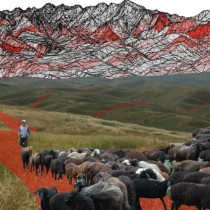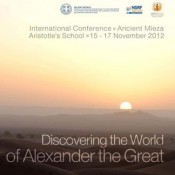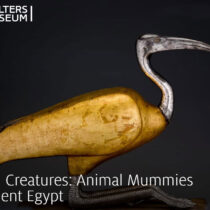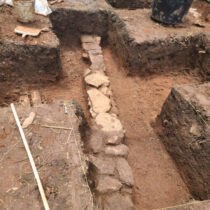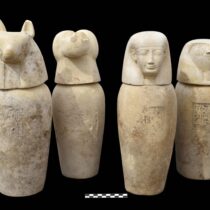Archaeologists from the National Museum of Tajikistan have discovered a rare and important artifact: a clay vessel bearing a fully preserved Bactrian-language inscription from the Kushan era. According to the museum, the find was made at the Khalkhajar archaeological site near the village of Sarband.
A jug with a tale to tell
Excavations at Khalkhajar, led by Mirali Zamon Karimdodzoda — head of the museum’s archaeology and numismatics department — began on May 20. The team revealed remains of ancient architecture, including clay and brick walls with traces of whitewash and well-preserved interior sections.
Most of the artifacts uncovered date to the Kushan Empire’s height between the 1st and 3rd centuries AD. The highlight of the finds is a two-handled clay jug, unearthed in fragments and carefully restored. What makes this jug extraordinary is its intact Bactrian inscription, written in a distinctive broken script — a very rare occurrence in Tajikistan.
Unraveling the inscription
To interpret the text, the museum consulted international experts: Professor Nicholas Sims-Williams, an authority on ancient Iranian languages, and numismatist Joe Cribb. According to their reading, the inscription states:
“eiado gō(l)z[o ]sido finzo sagkino ol(o) mo(.)”
Translation: “This water jug belongs to the woman Sagkina.”
Although simple, this phrase holds significant linguistic and cultural weight. It offers a rare window into daily life and the practices of personal ownership during the Kushan period, providing insights into literacy, gender roles, and identity in ancient Central Asia.
Cultural and historical context
The name “Sagkina” is valuable for onomastic research and helps deepen understanding of female naming patterns in the Kushan era. Such inscriptions suggest a relatively high level of literacy and a social norm of marking personal possessions — valuable clues about domestic life and social structures of the time.
Experts emphasize that discoveries like this are essential for tracing the development of writing systems in Eastern Iran and for exploring how language and material culture interacted in ancient societies.
Echoes of an Empire
The Kushan Empire was one of the most powerful and far-reaching states in ancient Central Asia, covering present-day Afghanistan, Pakistan, India, southern Uzbekistan, and parts of Tajikistan. The Bactrian language, written in a modified Greek script, played a crucial role in administration and trade and remains vital for reconstructing the region’s past.
Archaeological work at Khalkhajar is ongoing. All finds are being documented for future exhibition at the National Museum of Tajikistan, where the inscribed jug will become a centerpiece celebrating the region’s rich cultural legacy.

